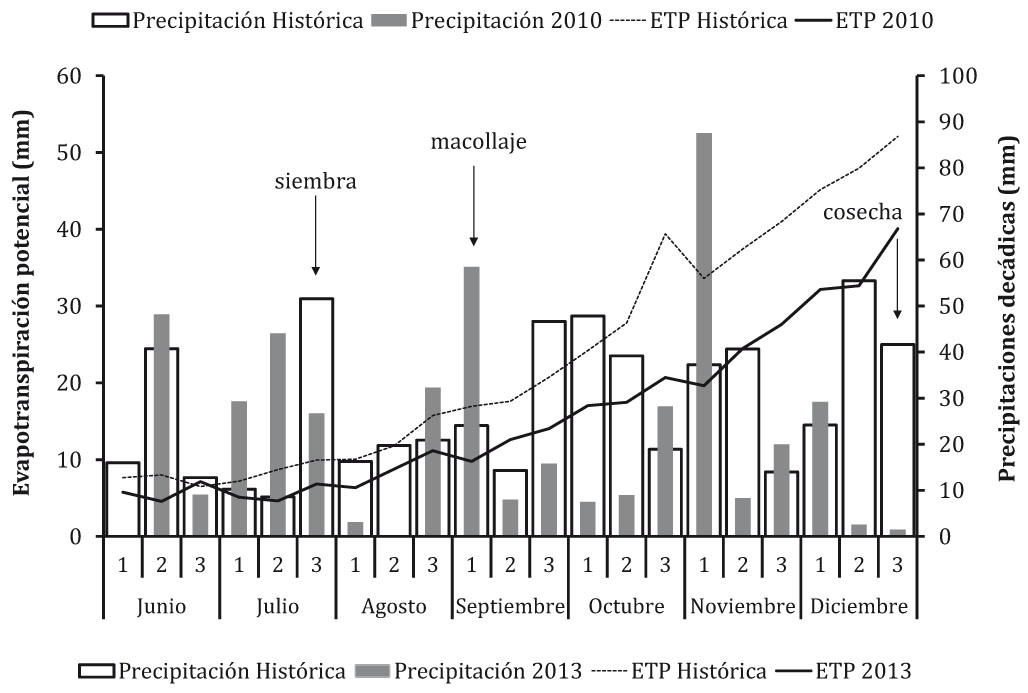Tillage and fertilization as modulators of the dynamics of microbial communities associated with a wheat crop of Southeast of Buenos Aires (Argentina)
Keywords:
arbuscular mycorrhizal colonization, P solubilisers, Triticum aestivum, crop managementAbstract
The objective was to evaluate under field conditions, the effect of tillage and fertilization with macro and micronutrients on growth of wheat crop, root colonization by arbuscular mycorrhizal fungi and the abundance of P solubilizing microorganisms in the rhizosphere. Wheat crop (cv. "Buck SY 300") growth, root mycorrhizal colonization and soil chemical characteristics were assessed during two growing seasons (two years) in Balcarce (Buenos Aires province) of a trial arranged in three completely randomized blocks with treatments arranged in split plot. The main plot treatments were tillage: non-tillage and conventional tillage and subplots following treatments: unfertilized (control); fertilized with N, P and S (NPS); and fertilized with N, P, S; Cu and Zn and micronutrients (NPS + Mi). During the second year abundance of total bacteria and P solubilizer (solP) were also assessed. Fertilization increased growth and yield of the wheat crop; however, tillage had no significant effect. Fertilization (NPS and NPS+Micronutrients) negatively affected mycorrhizal colonization, while tillage depressed root colonization only in tillering. Tillage and fertilization did not affect the abundance of total cultivable bacteria. Instead, tillage and fertilization with macro and micronutrients reduced solP abundance. We confirmed lack of tillage effect but depressive fertilization effect on mycorrhizal colonization and solP associated of wheat crop of Balcarce (Buenos Aires Province). Furthermore, this results shown that even in intensive production systems, arbuscular mycorrhizal fungi and soil P solubilizer bacteria are associated to the wheat crop and fertilization strategies are required in order to maintain high productivity without depressing the native soil microbial populations.
Downloads

Downloads
Published
How to Cite
Issue
Section
License
Aquellos autores/as que tengan publicaciones con esta revista, aceptan las Políticas Editoriales.










.jpg)




